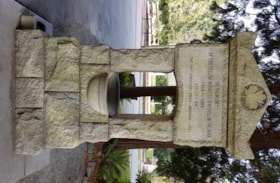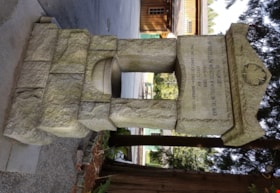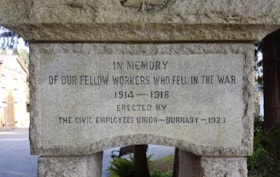More like 'Interview with William J. Copeland by Rod Fowler February 18, 1990 - Track 1'
Arminson, George - Burnaby Sanitation
https://search.heritageburnaby.ca/link/archivedescription58829
- Repository
- City of Burnaby Archives
- Date
- ca.1970
- Collection/Fonds
- Columbian Newspaper collection
- Description Level
- Item
- Physical Description
- 1 photograph : b&w ; 8 x 5.5 cm
- Scope and Content
- Photograph of George Arminson from Burnaby Sanitation.
- Repository
- City of Burnaby Archives
- Date
- ca.1970
- Collection/Fonds
- Columbian Newspaper collection
- Physical Description
- 1 photograph : b&w ; 8 x 5.5 cm
- Description Level
- Item
- Record No.
- 480-1290
- Access Restriction
- No restrictions
- Reproduction Restriction
- Reproduce for fair dealing purposes only
- Accession Number
- 2009-01
- Scope and Content
- Photograph of George Arminson from Burnaby Sanitation.
- Names
- Armison, George
- Media Type
- Photograph
- Notes
- Title based on contents of photograph
Images
COVID-19 solid waste disposal procedures
https://search.heritageburnaby.ca/link/museumdescription15406
- Repository
- Burnaby Village Museum
- Date
- 27 Mar. 2020
- Collection/Fonds
- Burnaby Village Museum COVID-19 collection
- Description Level
- Item
- Physical Description
- 1 video recording (mp4) (56 sec.) : digital, 24 fps, col., sd., stereo
- Scope and Content
- Film clip of Burnaby Mayor Mike Hurley and employee named Rob with the City of Burnaby Solid Waste and Recycling Program. The Mayor and Rob explain the new COVID-19 procedures in how to dispose of solid waste.
- Repository
- Burnaby Village Museum
- Collection/Fonds
- Burnaby Village Museum COVID-19 collection
- Description Level
- Item
- Physical Description
- 1 video recording (mp4) (56 sec.) : digital, 24 fps, col., sd., stereo
- Scope and Content
- Film clip of Burnaby Mayor Mike Hurley and employee named Rob with the City of Burnaby Solid Waste and Recycling Program. The Mayor and Rob explain the new COVID-19 procedures in how to dispose of solid waste.
- History
- Video taken by the City of Burnaby Marketing Department in 2020. The original intent of the clip was to produce communications about the pandemic and changes throughout the City that residents needed to be aware of.
- Creator
- City of Burnaby
- Subjects
- Public Services - Municipal Services
- Public Services - Garbage Removal
- Pandemics - COVID-19
- Accession Code
- BV021.2.50
- Access Restriction
- No restrictions
- Reproduction Restriction
- May be restricted by third party rights
- Date
- 27 Mar. 2020
- Media Type
- Moving Images
- Notes
- Title based on contents of film
Images
Video
COVID-19 solid waste disposal procedures, 27 Mar. 2020
COVID-19 solid waste disposal procedures, 27 Mar. 2020
https://search.heritageburnaby.ca/media/hpo/_Data/_BVM_Moving_Images/2021_0002_0050_001.mp4New COVID-19 procedures at Burnaby Eco-Centre
https://search.heritageburnaby.ca/link/museumdescription15407
- Repository
- Burnaby Village Museum
- Date
- 27 Mar. 2020
- Collection/Fonds
- Burnaby Village Museum COVID-19 collection
- Description Level
- Item
- Physical Description
- 1 video recording (mp4) (17 sec.) : digital, 24 fps, col., sd., stereo
- Scope and Content
- Film clip of Burnaby Mayor Mike Hurley on site at the Burnaby Eco-Centre. The Mayor provides the hours of operation and explains the COVID-19 physical distancing procedures in place to protect people when dropping off items.
- Repository
- Burnaby Village Museum
- Collection/Fonds
- Burnaby Village Museum COVID-19 collection
- Description Level
- Item
- Physical Description
- 1 video recording (mp4) (17 sec.) : digital, 24 fps, col., sd., stereo
- Scope and Content
- Film clip of Burnaby Mayor Mike Hurley on site at the Burnaby Eco-Centre. The Mayor provides the hours of operation and explains the COVID-19 physical distancing procedures in place to protect people when dropping off items.
- History
- Video taken by the City of Burnaby Marketing Department in 2020. The original intent of the clip was to produce communications about the pandemic and changes throughout the City that residents needed to be aware of.
- Creator
- City of Burnaby
- Subjects
- Officials - Mayors and Reeves
- Public Services - Municipal Services
- Public Services - Garbage Removal
- Pandemics - COVID-19
- Names
- Hurley, Mike
- Geographic Access
- Still Creek Drive
- Street Address
- 4855 Still Creek Drive
- Accession Code
- BV021.2.49
- Access Restriction
- No restrictions
- Reproduction Restriction
- May be restricted by third party rights
- Date
- 27 Mar. 2020
- Media Type
- Moving Images
- Notes
- Title based on contents of film
Images
Video
New COVID-19 procedures at Burnaby Eco-Centre, 27 Mar. 2020
New COVID-19 procedures at Burnaby Eco-Centre, 27 Mar. 2020
https://search.heritageburnaby.ca/media/hpo/_Data/_BVM_Moving_Images/2021_0002_0049_001.mp4New COVID-19 procedures at Burnaby Eco-Centre
https://search.heritageburnaby.ca/link/museumdescription15408
- Repository
- Burnaby Village Museum
- Date
- 27 Mar. 2020
- Collection/Fonds
- Burnaby Village Museum COVID-19 collection
- Description Level
- Item
- Physical Description
- 1 video recording (mp4) (22 sec.) : digital, 24 fps, col., sd., stereo
- Scope and Content
- Film clip of Burnaby Mayor Mike Hurley and employee named Rob with Burnaby Solid Waste and Recycling on site at the Burnaby Eco-Centre. Rob and the Mayor explain that the yellow recycling bag is to be used for clean paper only, no used tissues or napkins will be accepted in the yellow bag.
- Repository
- Burnaby Village Museum
- Collection/Fonds
- Burnaby Village Museum COVID-19 collection
- Description Level
- Item
- Physical Description
- 1 video recording (mp4) (22 sec.) : digital, 24 fps, col., sd., stereo
- Scope and Content
- Film clip of Burnaby Mayor Mike Hurley and employee named Rob with Burnaby Solid Waste and Recycling on site at the Burnaby Eco-Centre. Rob and the Mayor explain that the yellow recycling bag is to be used for clean paper only, no used tissues or napkins will be accepted in the yellow bag.
- History
- Video taken by the City of Burnaby Marketing Department in 2020. The original intent of the clip was to produce communications about the pandemic and changes throughout the City that residents needed to be aware of.
- Creator
- City of Burnaby
- Subjects
- Officials - Mayors and Reeves
- Public Services - Municipal Services
- Public Services - Garbage Removal
- Pandemics - COVID-19
- Names
- Hurley, Mike
- Geographic Access
- Still Creek Drive
- Street Address
- 4855 Still Creek Drive
- Accession Code
- BV021.2.51
- Access Restriction
- No restrictions
- Reproduction Restriction
- May be restricted by third party rights
- Date
- 27 Mar. 2020
- Media Type
- Moving Images
- Planning Study Area
- Dawson-Delta Area
- Notes
- Title based on contents of film
Images
Video
New COVID-19 procedures at Burnaby Eco-Centre, 27 Mar. 2020
New COVID-19 procedures at Burnaby Eco-Centre, 27 Mar. 2020
https://search.heritageburnaby.ca/media/hpo/_Data/_BVM_Moving_Images/2021_0002_0051_001.mp4Burnaby Waterworks
https://search.heritageburnaby.ca/link/archivedescription39587
- Repository
- City of Burnaby Archives
- Date
- [1950]
- Collection/Fonds
- Engineering Department fonds
- Description Level
- Item
- Physical Description
- 1 photograph : b&w ; 20 x 25 cm
- Scope and Content
- Photograph of seven men standing in front of a truck with a sign that reads; "Corporation of Burnaby Waterworks Dept." written on its side.
- Repository
- City of Burnaby Archives
- Date
- [1950]
- Collection/Fonds
- Engineering Department fonds
- Physical Description
- 1 photograph : b&w ; 20 x 25 cm
- Description Level
- Item
- Record No.
- CBA11
- Access Restriction
- Open access
- Reproduction Restriction
- Reproduce for fair dealing purposes only
- Accession Number
- 2004-06
- Scope and Content
- Photograph of seven men standing in front of a truck with a sign that reads; "Corporation of Burnaby Waterworks Dept." written on its side.
- Names
- Burnaby Waterworks
- Media Type
- Photograph
Burnaby Waterworks Construction Staff, 1912
https://search.heritageburnaby.ca/link/museumdescription901
- Repository
- Burnaby Village Museum
- Date
- 1912
- Collection/Fonds
- Burnaby Village Museum Photograph collection
- Description Level
- Item
- Physical Description
- 1 phototgraph : sepia ; 12.3 x 19.3 cm mounted on paper 13.3 x 20.1 mounted on cardboard 21.1 x 27.2 cm
- Scope and Content
- Photograph of Burnaby Waterworks construction staff from 1912. The five men in the group are clearly identified by the printed information on the cardboard mount provided by the photographer. Standing in the back to the left is Inspector J.M. MacLean. Standing to the right is Inspector F. Howard. …
- Repository
- Burnaby Village Museum
- Collection/Fonds
- Burnaby Village Museum Photograph collection
- Description Level
- Item
- Physical Description
- 1 phototgraph : sepia ; 12.3 x 19.3 cm mounted on paper 13.3 x 20.1 mounted on cardboard 21.1 x 27.2 cm
- Scope and Content
- Photograph of Burnaby Waterworks construction staff from 1912. The five men in the group are clearly identified by the printed information on the cardboard mount provided by the photographer. Standing in the back to the left is Inspector J.M. MacLean. Standing to the right is Inspector F. Howard. Seated on the left is Inspector John Parr. Seated in the middle is Supervising Engineer Campbell MacDonald. Seated on the right is Inspector N.W. Collins.
- Accession Code
- HV975.97.1
- Access Restriction
- No restrictions
- Reproduction Restriction
- No known restrictions
- Date
- 1912
- Media Type
- Photograph
- Scan Resolution
- 600
- Scan Date
- 2023-06-06
- Photographer
- Wadds, David
- Notes
- Transcribed title
- Photographer is identified printed on the left side of matt below photograph: "D. WADDS, PHOTOGRAPHER"
- Caption below photograph and printed on matt reads: "BURNABY WATERWORKS CONSTRUCTION STAFF, 1912 / INSPECTOR J.M. MACLEAN_INSPECTOR F.HOWARD / INSPECTOR JOHN PAR_SUPERVISING ENGINEER CAMPBELL MACDONALD_INSPECTOR N.W. COLLINS"
Images
Inauguration of the water system at Burnaby
https://search.heritageburnaby.ca/link/archivedescription35938
- Repository
- City of Burnaby Archives
- Date
- July 16, 1912
- Collection/Fonds
- Burnaby Historical Society fonds
- Description Level
- Item
- Physical Description
- 1 photograph : b&w postcard ; 8.9 x 14.0 cm
- Scope and Content
- Photographic postcard of Reeve Weart addressing a crowd gathered around the bandstand in Central Park for the inauguration of Burnaby Water Works. The Reeve is standing as he looks towards the crowd. Other men are seated in a semi-circle inside the bandstand. This was known as "Splash Day."
- Repository
- City of Burnaby Archives
- Date
- July 16, 1912
- Collection/Fonds
- Burnaby Historical Society fonds
- Subseries
- Pioneer Tales subseries
- Physical Description
- 1 photograph : b&w postcard ; 8.9 x 14.0 cm
- Description Level
- Item
- Record No.
- 204-798
- Access Restriction
- No restrictions
- Reproduction Restriction
- No known restrictions
- Accession Number
- BHS1988-03
- Scope and Content
- Photographic postcard of Reeve Weart addressing a crowd gathered around the bandstand in Central Park for the inauguration of Burnaby Water Works. The Reeve is standing as he looks towards the crowd. Other men are seated in a semi-circle inside the bandstand. This was known as "Splash Day."
- Subjects
- Buildings - Recreational - Bandstands
- Persons - Crowds
- Officials - Mayors and Reeves
- Public Services - Utilities
- Public Services - Public Works
- Documentary Artifacts - Postcards
- Names
- Weart, R.W.
- Media Type
- Photograph
- Notes
- 1 b&w copy negative accompanying
- Annotation of back of postcard reads, "July 16 - 1912 / Inauguration of the water system at Burnaby"
- Geographic Access
- Central Park
- Imperial Street
- Street Address
- 3883 Imperial Street
- Historic Neighbourhood
- Central Park (Historic Neighbourhood)
- Planning Study Area
- Maywood Area
Images
Burnaby Civic Employees Union Annual Picnic
https://search.heritageburnaby.ca/link/museumdescription3024
- Repository
- Burnaby Village Museum
- Date
- 1 Aug. 1953
- Collection/Fonds
- Burnaby Village Museum Photograph collection
- Description Level
- Item
- Physical Description
- 1 photograph : b&w ; 16.5 x 68.5 cm in frame 19 x 70.5 cm
- Scope and Content
- Photograph of the Burnaby Civic Employees Union (Local 23) Annual Picnic in Belcarra Park, Vancouver.
- Repository
- Burnaby Village Museum
- Collection/Fonds
- Burnaby Village Museum Photograph collection
- Description Level
- Item
- Physical Description
- 1 photograph : b&w ; 16.5 x 68.5 cm in frame 19 x 70.5 cm
- Material Details
- Mounted in decorative carved wooden frame painted white
- Scope and Content
- Photograph of the Burnaby Civic Employees Union (Local 23) Annual Picnic in Belcarra Park, Vancouver.
- Geographic Access
- Vancouver
- Accession Code
- HV983.18.1
- Access Restriction
- No restrictions
- Reproduction Restriction
- No known restrictions
- Date
- 1 Aug. 1953
- Media Type
- Photograph
- Photographer
- Sunday, Fred William
- Notes
- Title based on contents of photograph
Images
Burnaby Civic Employees' Union Local No. 23 constitution and bylaws
https://search.heritageburnaby.ca/link/museumdescription13410
- Repository
- Burnaby Village Museum
- Date
- October 1975
- Collection/Fonds
- Burnaby Civic Employees' Union fonds
- Description Level
- Item
- Physical Description
- 1 booklet
- Scope and Content
- Item consists of "Burnaby Civic Employees' Local Union No. 23 Constitution and Bylaws" booklet as amended to October 1975. The booklet was chartered by Canadian Union of Public Employees 1963. The booklet contains various information about the Burnaby Civic Employees Local Union.
- Repository
- Burnaby Village Museum
- Collection/Fonds
- Burnaby Civic Employees' Union fonds
- Description Level
- Item
- Physical Description
- 1 booklet
- Material Details
- The booklet measures 10 cm x 15 cm
- Scope and Content
- Item consists of "Burnaby Civic Employees' Local Union No. 23 Constitution and Bylaws" booklet as amended to October 1975. The booklet was chartered by Canadian Union of Public Employees 1963. The booklet contains various information about the Burnaby Civic Employees Local Union.
- Subjects
- Organizations - Unions
- Accession Code
- BV993.43.6
- Access Restriction
- No restrictions
- Reproduction Restriction
- May be restricted by third party rights
- Date
- October 1975
- Media Type
- Textual Record
- Scan Resolution
- 72
- Scan Date
- Nov. 22, 2009
- Scale
- 100
- Notes
- Title based on contents of item
Images
CUPE rally at Simon Fraser University
https://search.heritageburnaby.ca/link/archivedescription96673
- Repository
- City of Burnaby Archives
- Date
- [2003]
- Collection/Fonds
- Burnaby NewsLeader photograph collection
- Description Level
- File
- Physical Description
- 6 photographs (tiff) : col.
- Scope and Content
- File contains photographs of a rally at Simon Fraser University for CUPE members. Photographs depict members marching up the steps by the Convocation Mall and rallying in a large crowd with signs; CUPE university coordinator Connie Credico speaking to media; and Michael Stevenson, president and vic…
- Repository
- City of Burnaby Archives
- Date
- [2003]
- Collection/Fonds
- Burnaby NewsLeader photograph collection
- Physical Description
- 6 photographs (tiff) : col.
- Description Level
- File
- Record No.
- 535-2295
- Access Restriction
- No restrictions
- Reproduction Restriction
- No restrictions
- Accession Number
- 2018-12
- Scope and Content
- File contains photographs of a rally at Simon Fraser University for CUPE members. Photographs depict members marching up the steps by the Convocation Mall and rallying in a large crowd with signs; CUPE university coordinator Connie Credico speaking to media; and Michael Stevenson, president and vice-chancellor of SFU, speaking to the rally and media through a bullhorn.
- Subjects
- Protests and Demonstrations
- Buildings - Schools - Universities and Colleges
- Organizations - Unions
- Names
- Simon Fraser University
- Media Type
- Photograph
- Photographer
- Flanagan, Colleen
- Notes
- Title based on caption
- Collected by editorial for use in a March 2003 issue of the Burnaby NewsLeader
- Caption from metadata for 535-2295-1: "Devon Bates, left on drums, and Marcos X, right on drums, lead a rally Monday afternoon across the campus grounds of Simon Fraser University for CUPE members."
- Caption from metadata for 535-2295-2: "Gina Murray blows a whistle in support of a general strike for CUPE members during a ralley on the campus grounds of Simon Fraser University Monday afternoon."
- Caption from metadata for 535-2295-3: "A spectator looks down upon the flags and banners at a rally for CUPE members on the campus grounds of Simon Fraser University Monday afternoon. "
- Caption from metadata for 535-2295-4: "Connie Credico, CUPE university co-ordinator, talks to a throng of media during a rally Monday afternoon on the campus grounds of Simon Fraser University."
- Caption from metadata for 535-2295-5: "A man holds a sign saying Ambivalence Blvd. Monday afternoon during a rally for CUPE members on the campus grounds of Simon Fraser University."
- Caption from metadata for 535-2295-6: "Michael Stevenson, president and vice-chancellor of SFU, faces the crowd and the media during a rally held on campus Monday afternoon."
- Geographic Access
- Burnaby Mountain Conservation Area
- University Drive
- Street Address
- 8888 University Drive
- Planning Study Area
- Burnaby Mountain Area
Images
CUPE support workers strike
https://search.heritageburnaby.ca/link/archivedescription97947
- Repository
- City of Burnaby Archives
- Date
- [2000]
- Collection/Fonds
- Burnaby NewsLeader photograph collection
- Description Level
- Item
- Physical Description
- 1 photograph (tiff) : col.
- Scope and Content
- Photograph of an unidentified person wearing a sign that reads "CUPE On Strike," walking the picket line during a CUPE support workers strike. The person is walking through the snow underneath a sign stating the speed limit for Burnaby school zones.
- Repository
- City of Burnaby Archives
- Date
- [2000]
- Collection/Fonds
- Burnaby NewsLeader photograph collection
- Physical Description
- 1 photograph (tiff) : col.
- Description Level
- Item
- Record No.
- 535-3073
- Access Restriction
- No restrictions
- Reproduction Restriction
- No restrictions
- Accession Number
- 2018-12
- Scope and Content
- Photograph of an unidentified person wearing a sign that reads "CUPE On Strike," walking the picket line during a CUPE support workers strike. The person is walking through the snow underneath a sign stating the speed limit for Burnaby school zones.
- Subjects
- Protests and Demonstrations
- Protests and Demonstrations - Strikes
- Education
- Organizations - Unions
- Media Type
- Photograph
- Photographer
- Bartel, Mario
- Notes
- Title based on caption
- Collected by editorial for use in a January 2000 issue of the Burnaby NewsLeader
- Caption from metadata: "The only traffic around Burnaby schools is CUPE support workers walking the picket line after they went out on strike Thursday morning."
Images
Interview with Don and Orville Jantzen by Eric Damer November 19, 2012 - Track 1
https://search.heritageburnaby.ca/link/oralhistory349
- Repository
- City of Burnaby Archives
- Date Range
- 1950-1975
- Length
- 0:09:40
- Summary
- This portion of the recording pertains to Don Jantzen's memories of first coming to Burnaby and his decision to become part of the peace movement. Being active in the Trade Union Movement as an International Longshore and Warehouse Union (ILWU) member, Don recalls his involvement in marches, peace …
- Repository
- City of Burnaby Archives
- Summary
- This portion of the recording pertains to Don Jantzen's memories of first coming to Burnaby and his decision to become part of the peace movement. Being active in the Trade Union Movement as an International Longshore and Warehouse Union (ILWU) member, Don recalls his involvement in marches, peace rallies and strikes.
- Date Range
- 1950-1975
- Photo Info
- Don Jantzen, [198-]. Item no. 549-040.
- Length
- 0:09:40
- Interviewer
- Damer, Eric
- Interview Date
- November 19, 2012
- Scope and Content
- Recording is an interview with Don Jantzen and his brother Orville Jantzen conducted by Burnaby Village Museum employee Eric Damer, November 19, 2012. Major themes discussed are: political activism and the trade union movement.
- Biographical Notes
- Don Jantzen came to Vancouver from the prairies following the war, found work, married, and settled in Burnaby in 1950. Through his work as a longshoreman, Don became active in the trade union movement (ILWU) and eventually became vice president of the Vancouver local. He was also active in politics, helping to launch the Burnaby Citizen’s Association in the early nineteen-fifties and working as campaign manager for candidates in both the provincial and the federal New Democratic Party (NDP). Don has been a participant in local politics for many years as well as a supporter of Habitat for Humanity. Don's younger brother, Orville Jantzen, was born in Saskatchewan but grew up in South Vancouver. He is married with two children. Orville began his career as a salesman for a Burnaby bakery and remained in the food and beverage industry, working in British Columbia, Alberta, and Saskatchewan. Since retiring, Orville has been engaged with Canadian National Institute for the Blind (CNIB).
- Total Tracks
- 4
- Total Length
- 0:30:32
- Interviewee Name
- Jantzen, Don
- Jantzen, Orville
- Interview Location
- Interviewee's residence
- Interviewer Bio
- Eric Damer is a lifelong British Columbian born in Victoria, raised in Kamloops, and currently residing in Burnaby. After studying philosophy at the University of Victoria, he became interested in the educational forces that had shaped his own life. He completed master’s and doctoral degrees in educational studies at the University of British Columbia with a particular interest in the history of adult and higher education in the province. In 2012, Eric worked for the City of Burnaby as a field researcher and writer, conducting interviews for the City Archives and Museum Oral History Program.
- Collection/Fonds
- Community Heritage Commission Special Projects fonds
- Transcript Available
- None
- Media Type
- Sound Recording
Images
Audio Tracks
Track one of recording of interview with Don and Orville Jantzen
Track one of recording of interview with Don and Orville Jantzen
https://search.heritageburnaby.ca/media/hpo/_Data/_Archives_Oral_Histories/_Unrestricted/MSS171-015/MSS171-015_Track_1.mp3Interview with Don and Orville Jantzen by Eric Damer November 19, 2012 - Track 2
https://search.heritageburnaby.ca/link/oralhistory350
- Repository
- City of Burnaby Archives
- Date Range
- 1953-1977
- Length
- 0:08:00
- Summary
- This portion of the recording pertains to Don Jantzen's memories of prominent moments in Canadian Union history and of Burnaby's political landscape. Don mentions the strike of 1967 at the "Big Owe" Olympic Stadium in Montreal and goes on to discuss Burnaby Council's fair wage legislation. He discu…
- Repository
- City of Burnaby Archives
- Summary
- This portion of the recording pertains to Don Jantzen's memories of prominent moments in Canadian Union history and of Burnaby's political landscape. Don mentions the strike of 1967 at the "Big Owe" Olympic Stadium in Montreal and goes on to discuss Burnaby Council's fair wage legislation. He discusses the Burnaby Citizen's Association (BCA).
- Date Range
- 1953-1977
- Photo Info
- Don Jantzen, [198-]. Item no. 549-040.
- Length
- 0:08:00
- Interviewer
- Damer, Eric
- Interview Date
- November 19, 2012
- Scope and Content
- Recording is an interview with Don Jantzen and his brother Orville Jantzen conducted by Burnaby Village Museum employee Eric Damer, November 19, 2012. Major themes discussed are: political activism and the trade union movement.
- Biographical Notes
- Don Jantzen came to Vancouver from the prairies following the war, found work, married, and settled in Burnaby in 1950. Through his work as a longshoreman, Don became active in the trade union movement (ILWU) and eventually became vice president of the Vancouver local. He was also active in politics, helping to launch the Burnaby Citizen’s Association in the early nineteen-fifties and working as campaign manager for candidates in both the provincial and the federal New Democratic Party (NDP). Don has been a participant in local politics for many years as well as a supporter of Habitat for Humanity. Don's younger brother, Orville Jantzen, was born in Saskatchewan but grew up in South Vancouver. He is married with two children. Orville began his career as a salesman for a Burnaby bakery and remained in the food and beverage industry, working in British Columbia, Alberta, and Saskatchewan. Since retiring, Orville has been engaged with Canadian National Institute for the Blind (CNIB).
- Total Tracks
- 4
- Total Length
- 0:30:32
- Interviewee Name
- Jantzen, Don
- Jantzen, Orville
- Interview Location
- Interviewee's residence
- Interviewer Bio
- Eric Damer is a lifelong British Columbian born in Victoria, raised in Kamloops, and currently residing in Burnaby. After studying philosophy at the University of Victoria, he became interested in the educational forces that had shaped his own life. He completed master’s and doctoral degrees in educational studies at the University of British Columbia with a particular interest in the history of adult and higher education in the province. In 2012, Eric worked for the City of Burnaby as a field researcher and writer, conducting interviews for the City Archives and Museum Oral History Program.
- Collection/Fonds
- Community Heritage Commission Special Projects fonds
- Transcript Available
- None
- Media Type
- Sound Recording
Images
Audio Tracks
Track two of recording of interview with Don and Orville Jantzen
Track two of recording of interview with Don and Orville Jantzen
https://search.heritageburnaby.ca/media/hpo/_Data/_Archives_Oral_Histories/_Unrestricted/MSS171-015/MSS171-015_Track_2.mp3Interview with Honourable Raj Chouhan
https://search.heritageburnaby.ca/link/museumdescription19349
- Repository
- Burnaby Village Museum
- Date
- [1957-2022] (interview content), interviewed 2 Dec. 2022
- Collection/Fonds
- Burnaby Village Museum fonds
- Description Level
- Item
- Physical Description
- 1 sound recording (wav) + 1 sound recording (mp3) (49 min., 21 sec.)
- Scope and Content
- Item consists of an oral history interview with Honourable Raj Chouhan conducted by Burnaby Village Museum Assistant Curator, Kate Petrusa. Raj Chouhan shares his ancestral background and personal experiences immigrating to Canada from India in 1973 and living and working in Canada as an immigrant…
- Repository
- Burnaby Village Museum
- Collection/Fonds
- Burnaby Village Museum fonds
- Series
- Museum Oral Histories series
- Description Level
- Item
- Physical Description
- 1 sound recording (wav) + 1 sound recording (mp3) (49 min., 21 sec.)
- Material Details
- Interviewer: Kate Petrusa Interviewee: Honourable Raj Chouhan Location of Interview: Residence of Honourable Raj Chouhan Interview Date: December 2, 2022 Total Number of tracks: 1 Total Length of all Tracks: (00:49:21) Digital master recording (wav) was converted to mp3 for access on Heritage Burnaby
- Scope and Content
- Item consists of an oral history interview with Honourable Raj Chouhan conducted by Burnaby Village Museum Assistant Curator, Kate Petrusa. Raj Chouhan shares his ancestral background and personal experiences immigrating to Canada from India in 1973 and living and working in Canada as an immigrant and the organizations that he became involved with. Honourable Raj Chouhan recalls how he arrived in Burnaby with his family in 1973 and that his family worked in farming. Chouhan imparts his first hand experiences as a new immigrant working as a labourer in the farming industry and describes the unsafe and unfair working conditions that he and migrant workers faced. Chouhan conveys how this experience lead him to become an activist for better working conditions for migrant workers. This lead Chouhan and others to form the Canadian Farm Workers Union in 1980. Chouhan recollects his experiences flying from India to Canada with his wife, his first impressions after arriving in Vancouver and driving to Burnaby and what he brought with him. Chouhan explains his connections to Burnaby. Members of Chouhan's wife's family immgrated to Canada in 1957 and his wife and her three brothers joined them in 1970. Chouhan's father in law, Hardial Singh Grewal immigrated in 1957 and became president of the Sikh temple in New Westminster. Hardial Singh Grewal worked in a lumber mill in Vancouver and eventually bought a house in Burnaby. Chouhan married to his wife at the Sikh temple in New Westminster and lived in Burnaby for a period before moving to New Westminster where they could find more affordable housing. Chouhan shares that he first worked as a farm labourer in Abbotsford and then found a job in the sawmill which paid more. Chouhan describes the extreme racism and discrimination that he and other immigrants faced which lead to the formation of the British Columbia Organization to Fight Racism under the leadership of Dr. Hari Prakash Sharma. Chouhan describes this organization that he was a part of and the Canadian Farm Workers Union that were both formed in Burnaby. Chouhan shares that he moved to Victoria in 1988 to serve on the Hospital Employee's Union and moved back to the mainland in 1993 and returned to Burnaby in 2001. Chouhan reflects on the history of South Asian immigration in Canada, how many of the migrants settled in the lower mainland including Burnaby, New Westminster and Vancouver establishing temples in Vancouver and New Westminster which became the centre for the South Asian community. He conveys how earlier occupations were limited to farming and millwork and how over time employment opportunities and education have broadened but there is still work to do. He imparts how second generation Canadians’ experiences differ from first generations providing examples of his own daughters’ and the occupations that they are working in. Chouhan provides his insights into the South Asian Canadian experience imparting “We make history every day and that history needs to be recorded and learned from.."... “People from different communities, different backgrounds who lived in Burnaby have contributed so much and South Asians are just like another community and participated in all aspects of social life, cultural, religious, economy. I'm so proud of our community, our forefathers who had that vision to fight for our rights. I'm inspired by people who struggled so much to gain basic rights, like the right to vote". Chouhan refers to these first immigrants as “Gadri Babbas” “revolutionary old people” who were also the main motivation that lead to India becoming a free country in 1947 and for fighting for basic rights here in Canada and how they made their contributions for future generations. Chouhan expresses what he imparts to students “Do not forget your past... if you remember your past then you are much more knowledgeable. Then we know what we need for the future. If we don't know the past, we don't know what the future is going to be like. To make a better future, you have to learn from the past and improve".
- History
- Interviewee biography: Honourable Raj Chouhan was born in the city of Ludhiana in the Province of Punjab in India and immigrated to Canada in 1973. After arriving in Canada, Raj's family settled in Burnaby. Raj grew up in Burnaby and attended schoool. Honourable Raj Chouhan was elected to the Legislative Assembly of British Columbia as the MLA for Burnaby-Edmonds in 2005 and was re-elected in 2009, 2013, 2017 and 2020. He was elected Speaker of the Legislative Assembly on December 7, 2020. Honourable Chouhan is the founding president of the Canadian Farmworkers Union and the British Columbia Organization to Fight Racism and has served as a director of the Hospital Employees' Union, the Labour Relations Board of B.C. and the Arbitration Bureau of B.C. Honourable Chouhan has also served as the Vice President of B.C. Human Rights Defenders since 2003 and has taught courses in Human Rights, the B.C. Labour Code and Collective Bargaining since 1987. Interviewer biography: Kate Petrusa is the Assistant Curator at the Burnaby Village Museum. In her role, she manages all aspects of the collection – including caring for physical artifacts and making their digital counterpart accessible. Before coming to Burnaby Village Museum in 2019, Kate has worked at several Museums around the Lower Mainland as a Curator and contractor since 2013.
- Creator
- Burnaby Village Museum
- Subjects
- Persons - South Asian Canadians
- Social Issues
- Social Issues - Racism
- Occupations - Agricultural Labourers
- Migration
- Organizations - Unions
- Rights
- Rights - Human Rights
- Agriculture
- Agriculture - Farms
- Government - Provincial Government
- Government
- Names
- Chouhan, Raj
- British Columbia Organization to Fight Racism
- Sharma, Dr. Hari Prakash
- Grewal, Hardial Singh
- Canadian Farmworkers Union
- Hospital Employees Union
- Khalsa Diwan Society
- Responsibility
- Petrusa, Kate
- Accession Code
- BV022.29.4
- Access Restriction
- No restrictions
- Reproduction Restriction
- No known restrictions
- Date
- [1957-2022] (interview content), interviewed 2 Dec. 2022
- Media Type
- Sound Recording
- Notes
- Title based on contents of item
- Transcription available on Heritage Burnaby
Documents
Audio Tracks
Interview with Honourable Raj Chouhan, [1957-2022] (interview content), interviewed 2 Dec. 2022
Interview with Honourable Raj Chouhan, [1957-2022] (interview content), interviewed 2 Dec. 2022
https://search.heritageburnaby.ca/media/hpo/_Data/_BVM_Sound_Recordings/Oral_Histories/2022_0029_0004_002.mp3Interview with Prem Kaur Gill, Santokh Singh Gill and Mohinder Kaur Gill
https://search.heritageburnaby.ca/link/museumdescription19347
- Repository
- Burnaby Village Museum
- Date
- [1957-2022] (interview content), interviewed 11 Nov. 2022
- Collection/Fonds
- Burnaby Village Museum fonds
- Description Level
- Item
- Physical Description
- 1 sound recording (m4a) (118 min., 39 sec.) + 1 sound recording (mp3) (115 min., 20 sec.)
- Scope and Content
- Item consists of an oral history interview with Santokh "Gurmail" Singh Gill and Mohinder Kaur Gill and their daughter, Prem Kaur Gill conducted by interviewers, Anushay Malik and Rajdeep. The interview is conducted in English, Punjabi, Hindi and Urdu. The three members of the Gill family share the…
- Repository
- Burnaby Village Museum
- Collection/Fonds
- Burnaby Village Museum fonds
- Series
- Museum Oral Histories series
- Description Level
- Item
- Physical Description
- 1 sound recording (m4a) (118 min., 39 sec.) + 1 sound recording (mp3) (115 min., 20 sec.)
- Material Details
- Interviewers: Anushay Malik, Rajdeep Interviewees: Prem Kaur Gill, Santokh "Gurmail" Singh Gill and Mohinder Kaur Gill Location of Interview: Gill family residence on Warwick Avenue in Burnaby Interview Date: November 11, 2022 Total Number of tracks: 1 Total Length of all Tracks: (1:58:39) Digital master recording (m4a) was converted to mp3 for access on Heritage Burnaby
- Scope and Content
- Item consists of an oral history interview with Santokh "Gurmail" Singh Gill and Mohinder Kaur Gill and their daughter, Prem Kaur Gill conducted by interviewers, Anushay Malik and Rajdeep. The interview is conducted in English, Punjabi, Hindi and Urdu. The three members of the Gill family share their ancestral background, their personal experiences immigrating to Canada, living in Burnaby and working in British Columbia as South Asian immigrants. 00:00 – 27:34 Santokh “Gurmail” Singh Gill and Mohinder Kaur Gill share their migration stories and experiences living and working in British Columbia as South Asian immigrants and their eldest child, Prem Kaur Gill shares her own experiences as a child of South Asian immigrants and growing up in British Columbia as a South Asian Canadian. Gurmail Singh Gill was born in the District of Jalandhar and Mohinder Kaur Gill was born in Hoshiapur of the Indian state of Punjab. Gurmail describes how he moved from India to England with his family in 1957, immigrated to Canada from England in 1966, married his wife Mohinder in England in 1968 and brought his family (parents and two siblings) to Canada from England in 1970 and other relatives including his wife’s family in the 1970s and 1980s. Mohinder and Gurmail Gill recollect their arranged marriage in England in 1968, their immigration process and explain how they arrived in Burnaby residing with a cousin at 4649 Georgia Street until they were able to purchase their own home after a few years. Gurmail shares names and connections to the relatives that came to British Columbia before him. Gurmail and Mohinder tell how they lived in the basement of the house and rented out the upper floor to save money. The couple recall what they brought with them when they immigrated to Canada and Mohinder Kaur Gill tells of how before leaving India, she and her mother made a special rajai for her to take with her. Mohinder describes the process of making a rajai (a quilted blanket that was made by hand). Gurmail and Mohinder Gill talk about the challenges that they’ve experienced as new immigrants including not being fluent in English, the cold weather and not having very many family or friends nearby to provide support. They attended the Gurdwara on Ross Street or Akali Singh Sikh Society Gurdwara on Skeena in Vancouver. They explain how there was limited access to grocery stores that supplied Punjabi and Indian spices and other cooking supplies. They talk about how they used a food mill and mortar and pestle to grind their own spices and flour and how Mohinder often made traditional sweets like barfi and laddo and pakoras using pea flour when they couldn’t get Besan flour. 27:35 – 36:11 Gurmail provides more details on his family’s immigration story, including names of relatives, how his six siblings and parents all immigrated to British Columbia in 1970 and how in the early 1970s and mid 1980’s Gurmail and his family sponsored approximately 70 friends and relations from India (including Mohinder’s family) to immigrate to Canada. When Mohinder’s family arrived they lived with them in their house until they were able to purchase property next door and build their own home. Children in the families all attended elementary and high school in Burnaby which now amounts to three generations. 36:12 – 59:28 Gurmail and Mohinder Gill talk about their experiences of racial discrimination. Gurmail recalls members of the South Asian community, Dr. Hari Prakash Sharma, Harinder Mahil and Charan Gill starting the British Columbia Organization to Fight Racism. Gurmail tells of how he got involved contributing some of his union dues as a member of CAIMAW (Canadian Association of Industrial Mechanical and Allied Workers Union- Local 15) and as a friend of Charan Gill and Raj Chouhan of the Canadian Farm Workers Union. Gurmail Gill explains how he was a founding member of CAIMAW and treasurer until the union merged with the Canadian Auto Workers Union (in 1991). Mohinder and Gurmail tell of how people from the South Asian community were discouraged from wearing Punjabi dresses or head coverings for fear of being yelled at with racial slurs and how it was often scary to go outside. Many from their community often avoided attending the Akali Singh Gurdwara since a head covering was required and people were afraid of being a target. Gurmail provides details about his work with A1 Steel, how different unions were formed pertaining to various skillsets and jobs per company and how he became a member of CAIMAW Local 15 (foundry workers). Mohinder recollects her experiences as a mother, the daily tasks involved and friends that she made who’d also emigrated from Punjab. Mohinder describes how she designed and sewed many Punjabi dresses using her electric sewing machine and how she learned English by attending adult classes at a church on Commercial Drive. Mohinder and her mother attended the classes for two hours per day for six years at a cost of twelve dollars for ten weeks. Once Mohinder could speak a little English, she started working and was able to practice more. 59:29 – 1:06:08 Mohinder, Gurmail and Prem talk about some of their favourite traditional foods including corn roti and spinach curry and how they grow many of their own vegetables including peppers, eggplant, saag (spinach), onions, garlic, cilantro, zucchini, squash and fenugreek. Mohinder reflects on how access to Punjabi clothing and fabric stores in Vancouver has changed and that ready made food is now more available. Traditional foods were previously made from scratch with women gathering together and cooking for hours and now it’s gotten easier but more expensive and less of a community feel. 1:06:09- 1:55:20 Mohinder and Gurmail Gill discuss and share their perspectives and experiences on raising a family in the past versus today. Gurmail imparts that all of his siblings became educated and secured professional careers while he continued to work in the trades. Prem Kaur Gill shares her own experiences growing up and attending school in Burnaby. Gurmail and Mohinder Gill recall the type of suitcase that they brought with them when they immigrated and how they recently they got rid of it. Gurmail and the group reflect and discuss the confusion with racial identity terms that have been used in this country. They comment that South Asians were referred to as “Hindu” and “East Indian” and Indigenous peoples were referred to as “Indian” and the controversy and racism behind some of these terms. The group discusses the impact of the caste system and other discriminatory experiences and compare their experiences of living in England to living in Canada. Prem comments on how it’s just recently that South Asian customs, celebrations and practices have been recognized and celebrated here in Canada, like Diwali and yoga. They comment on how much of the language, culture and customs have been retained in Surrey where many can still communicate in Punjabi and don’t need to be fluent in English. The group discusses how many South Asians immigrants first lived and worked in Vancouver but with rising property prices many moved to Surrey expanding and establishing a much larger South Asian community with resources. The group discusses and compares the differing travel routes that many of them and their relatives took when immigrating and travelling between India and Canada. The group talks about Rajdeep’s ancestral village in India which is near the Gill village of Firozpur. Gurmail explains the origins and details behind his family name that was changed from “Shergill” to “Gill” and the name “Santokh” from his maternal side.
- History
- Interviewees' biographies: Santokh "Gurmail" Singh Gill was born in the District of Jalandhar in Punjab, India. Gurmail moved to England with his family in 1957 and immigrated to British Columbia in 1966. Gurmail married his wife, Mohinder Kaur Gill in England in 1968 and she immigrated to British Columbia from England soon after. Gurmail first lived with a cousin in Burnaby before purchasing a home of his own in Burnaby where he raised his family. Gurmail worked in the steel industry and was a member and treasurer of the CAIMAW before the union merged with the Canadian Auto Workers Union. Mohinder Kaur Gill was born in the Hoshiapur in Punjab, India. She married her husband Santokh "Gurmail" Singh Gill in England in 1968 and immigrated to Burnaby, British Columbia to join her husband. Mohinder and Gurmail Gill have four children, all born in Burnaby. Prem Kaur Gill was born in Burnaby in 1969 and is the eldest child of Santokh "Gurmail" Singh Gill and Mohinder Kaur Gill. Prem grew up and attended school in Burnaby. Interviewers' biographies: Anushay Malik is labor historian with a geographical focus on South Asia. Anushay studied at the University of London and was a research fellow at the International Institute of Social History in Amsterdam, Netherlands. In 2014, Anushay moved back to her native Pakistan and joined Lahore University of Management Services as an Assistant Professor. In 2023, Anushay is a visiting scholar at Simon Fraser University and lives in Burnaby with her family. Anushay was a co-curator of the Burnaby Village Museum exhibit “Truths Not Often Told: Being South Asian in Burnaby”. Rajdeep was born and raised in the Lower Mainland and is of Punjabi (South Asian) descent. She has an Associate of Arts degree in Asian Studies from Kwantlen Polytechnic University, a Bachelor of Arts (Hons.) in Anthropology from the University of British Columbia. She is a student in the Restoration of Natural Systems program at the University of Victoria. Rajdeep works at Simon Fraser University as a Program Assistant and as a researcher with the City of Burnaby. At Burnaby Village Museum, Rajdeep contributed to the exhibit “Truths Not Often Told: Being South Asian in Burnaby”.
- Creator
- Burnaby Village Museum
- Subjects
- Clothing
- Foods
- Indigenous peoples
- Buildings - Religious - Temples
- Food Processing Tools and Equipment
- Persons - South Asian Canadians
- Social Issues
- Social Issues - Racism
- Migration
- Occupations
- Organizations - Unions
- Responsibility
- Rajdeep
- Malik, Anushay
- Accession Code
- BV022.29.2
- Access Restriction
- No restrictions
- Reproduction Restriction
- No known restrictions
- Date
- [1957-2022] (interview content), interviewed 11 Nov. 2022
- Media Type
- Sound Recording
- Notes
- Title based on contents of item
- Transcript available upon request - contact Burnaby Village Museum
- Indian Family System Reference notes: Baba = informal way to say grandfather; old man Bibi = informal way to say grandmother; old woman Dada= paternal grandfather Dadi= paternal grandmother Dadke= paternal family members; paternal side (Various spellings might exist for the following terms) Thaiyya= father’s elder brother (uncle) Thaiyyi= father’s elder brother’s wife (aunt) Chacha= father’s younger brother (uncle) Chachi= father’s younger brother’s wife (aunt) Bua= father’s sister (older or younger) (aunt) Phuphar= father’s sister’s husband (uncle) Nana= maternal grandfather Nani= maternal grandmother Nanke/nanka= maternal family members; maternal side Mama= mom’s brother (older or younger) (uncle) Mami= mom’s brother’s wife (aunt) Maasi= mom’s sister (older or younger) (aunt) Maasard= mom’s sister’s husband (uncle)
Audio Tracks
Interview with Prem Kaur Gill, Santokh Singh Gill and Mohinder Kaur Gill, [1957-2022] (interview content), interviewed 11 Nov. 2022
Interview with Prem Kaur Gill, Santokh Singh Gill and Mohinder Kaur Gill, [1957-2022] (interview content), interviewed 11 Nov. 2022
https://search.heritageburnaby.ca/media/hpo/_Data/_BVM_Sound_Recordings/Oral_Histories/2022_0029_0002_002.mp3Interview with Sev Morin by Rod Fowler April 4, 1990 - Track 7
https://search.heritageburnaby.ca/link/oralhistory543
- Repository
- City of Burnaby Archives
- Date Range
- 1930-1990
- Length
- 00:07:36
- Summary
- This portion of the interview is about Sev Morin’s involvement in the federal Liberal Party and in municipal politics with Alan Emmott; his mother Anne Marie Morin’s CCF work in Alberta and his brother Rudy Morin’s union activities and affiliation with Harvey Murphy; the political events held at “S…
- Repository
- City of Burnaby Archives
- Summary
- This portion of the interview is about Sev Morin’s involvement in the federal Liberal Party and in municipal politics with Alan Emmott; his mother Anne Marie Morin’s CCF work in Alberta and his brother Rudy Morin’s union activities and affiliation with Harvey Murphy; the political events held at “Severin’s”; and Sev Morin’s centrist political views
- Date Range
- 1930-1990
- Photo Info
- Sev Morin (left) of Severin's in Burnaby (formerly the Gai Paree) hosting a gala New Year's celebration, 1979. Item no. 480-712
- Length
- 00:07:36
- Names
- Liberal Party
- Emmott, Alan H
- Interviewer
- Fowler, Rod
- Interview Date
- April 4, 1990
- Scope and Content
- Recording is of an interview with Severin "Sev" Morin, conducted by Rod Fowler. Sev Morin was one of eleven participants interviewed as part of the SFU/Burnaby Centennial Committee's oral history series titled, "Voices of Burnaby". The interview is mainly about Sev Morin’s banquet hall, restaurant and night club business on Kingsway, originally named the “Gai Paree Supper Club” (1947-1976) and later “Severin’s” (1976-1985) and “Diego’s” (1985-1994), its function as a Burnaby landmark, and the entertainment and political people he met through his business. He also describes his many volunteer activities in Burnaby, including member of the SFU Senate, Rotary Club, Variety Club and Telethon, fund raising for Burnaby Hospital, and tourism related groups, and his political work for the federal Liberal party. He talks about his parents’ origins, the lives of his brothers Rudy and Rene, and the family’s involvement in establishing the “Gai Paree”. He also shares his views about the business and cultural development of Burnaby. To view “Narrow By” terms for each track expand this description and see “Notes”.
- Biographical Notes
- Severin “Sev” Rene Morin was born September 21, 1927, in Bonneville, Alberta, to Rene Pierre Morin (1878-1963) and Anne Marie (nee Lachiver) Morin (1886-1956). Mr. and Mrs. R. P. Morin and their son Rene Francois (1905-1954) immigrated to Edmonton, Alberta, from France in 1913, where Rene Pierre Morin worked for the C.N.R. and a second son Adolphe “Rudy” Ferdinand (1922-1969) was born, followed by their third son Severin. In 1943, after R.P. Morin retired, the family moved to Burnaby to a house on Sperling Avenue. Sometime earlier the two older Morin brothers found work in Trail at the smelter and developed musical careers. In 1946/47 the Morin family purchased property on Kingsway and built a banquet hall, the “Gai Paree Supper Club”. Sev and Rudy Morin managed the club and Rene F. Morin moved to Burnaby to join them with his band. The supper club, with its live music and dance floor, became a popular meeting place and wedding venue, eventually expanding into a restaurant and nightclub in the 1970s. The “Gai Paree” was renamed “Severin’s” in 1976 and “Diego’s” in 1985, closing finally in 1994. Sev Morin’s business life included three record stores which he owned with his friend Jack Cullen. Through these businesses Sev Morin was well known in the entertainment and hospitality industry. He and his restaurant also hosted political and social events that made the restaurant a community landmark. Sev Morin contributed many volunteer hours to community and charitable organizations, including an appointment to the SFU Senate, fundraising for the Burnaby Hospital, Director of the Variety Club and Rotary Club, and consultant for a variety of tourism related ventures. He also was active in the federal Liberal Party. Sev Morin and his wife Pauline married in 1950 and had three children. Sev Morin died at age 86 on March 28, 2014.
- Total Tracks
- 10
- Total Length
- 00:56:44
- Interviewee Name
- Morin, Severin "Sev"
- Interviewer Bio
- Rod Fowler returned to university as a mature student in the 1980s after working about twenty years in the field of economics and computerization in business in England, Europe and Western Canada. He graduated with a BA from SFU in both History and Sociology in 1987, his MA degree in Geography in 1989, and his PhD in Cultural Geography at SFU. He taught courses in Geography, Sociology, History and Canadian Studies at several Lower Mainland colleges, before becoming a full time member of the Geography Department at Kwantlen University College.
- Collection/Fonds
- SFU/Burnaby Centennial Committee fonds
- Transcript Available
- Transcript available
- Media Type
- Sound Recording
- Web Notes
- Interviews were digitized in 2015 allowing them to be accessible on Heritage Burnaby. The digitization project was initiated by the Community Heritage Commission with support from City of Burnaby Council.
Images
Audio Tracks
Track seven of interview with Sev Morin
Track seven of interview with Sev Morin
https://search.heritageburnaby.ca/media/hpo/_Data/_Archives_Oral_Histories/_Unrestricted/MSS187-021/MSS187-021_Track%207.mp3lapel pin
https://search.heritageburnaby.ca/link/museumartifact41405
- Repository
- Burnaby Village Museum
- Accession Code
- BV001.1.183
- Description
- Button pin, round, buff ground with wide brownish red border and green print. Around edge from left, "JULY / AUG / SEPT". Logo below 'AUG', illegible, "LI--HA" ?, then "1920". At bottom is brownish red dot at centre of "U.B.M.W.E.R.S.L." in circle. Pin is paper formed over a metal back and held in place by pressure. Clear coating over front. Back is dark metal with remains of pin clasp closure ?, coil of wire one side, lighter-coloured patch of metal around opening other side. Back is hollow. Manufacturer's stamp, mostly illegible, "--- CO" "--H.N.Y." and hallmark ?. Metal of back is tarnished, some scratches and wear on front.
- Object History
- Union dues button for the United Brotherhood of Maintenance of Way Employees and Railroad Shop Laborers which was affiliated with the American Federation of Labour. Railroad way workers oversaw the maintenace of railroad tracks. (For more information see http://americanhistory.si.edu/onthemove/collection/object_186.html)
- Category
- 08. Communication Artifacts
- Classification
- Personal Symbols
- Object Term
- Insignia
- Marks/Labels
- "JULY / AUG / SEPT", green letters printed around top "1920", larger green numbers printed in centre "U.B.M.W.E.R.S.L.", green letters printed around dot and surrounded by a green circle
- Subjects
- Adornment
- Adornment - Lapel Pins
- Industries
- Occupations - Railroad Labourers
- Organizations - Unions
- Transportation - Rail
Images
Lockout at Forest Lawn Memorial Park
https://search.heritageburnaby.ca/link/archivedescription96273
- Repository
- City of Burnaby Archives
- Date
- [2005]
- Collection/Fonds
- Burnaby NewsLeader photograph collection
- Description Level
- File
- Physical Description
- 2 photographs (tiff) : col.
- Scope and Content
- File contains photographs of Forest Lawn Memorial Park groundskeepers and maintenance workers on lockout. Photographs depict the workers, wearing "Construction & Specialized Workers' Union Local 1611 Locked Out by SCIC" signs, on the picket line outside of the cemetery gates.
- Repository
- City of Burnaby Archives
- Date
- [2005]
- Collection/Fonds
- Burnaby NewsLeader photograph collection
- Physical Description
- 2 photographs (tiff) : col.
- Description Level
- File
- Record No.
- 535-1956
- Access Restriction
- No restrictions
- Reproduction Restriction
- No restrictions
- Accession Number
- 2018-12
- Scope and Content
- File contains photographs of Forest Lawn Memorial Park groundskeepers and maintenance workers on lockout. Photographs depict the workers, wearing "Construction & Specialized Workers' Union Local 1611 Locked Out by SCIC" signs, on the picket line outside of the cemetery gates.
- Media Type
- Photograph
- Photographer
- Bartel, Mario
- Notes
- Title based on caption
- Collected by editorial for use in a February 2005 issue of the Burnaby NewsLeader
- Caption from metadata: "Groundskeepers and maintainence [sic] workers at Burnaby's Forest Lawn Cemetery walk a picket line after they were locked out on Wednesday."
- Geographic Access
- Royal Oak Avenue
- Street Address
- 3789 Royal Oak Avenue
- Historic Neighbourhood
- Burnaby Lake (Historic Neighbourhood)
- Planning Study Area
- Douglas-Gilpin Area
Images
memorial drinking fountain
https://search.heritageburnaby.ca/link/museumartifact8784
- Repository
- Burnaby Village Museum
- Accession Code
- BV985.1242.1
- Description
- The Memorial fountain is made of British Columbia granite. The fountain is currently three courses of rough stone, leading up to the smooth water bowl. Two side pillars carry the memorial stone and the peaked cap stone at the top. The memorial stone's face is smooth, to present the cut text of the memorial. There is a maple leaf cut into the face of the cap stone. The text and the maple leaf are highlighted with black paint. There is a small block at the rear of the fountain to allow children easy access and there is a smooth stone drinking bowl for animals at the proper right of the base of the fountain. The fountain on its original site was four courses high. In its current site the bottom course is set level with the ground. The main bowl is supplied with running water but the animal bowl is dry.
- Object History
- The fountain was erected by the Burnaby Civic Employees Union (now CUPE Local 23) and is dedicated to Union members who died in the Great War. Local stonemason, William Williamson, constructed the fountain in 1923 and it was unveiled on June 17, 1923. In 1977, the fountain was moved and rededicated from the old Burnaby Municipal Hall site to its current site at Burnaby Village Museum. On November 23, 1992, the fountain was given official Heritage Designation by Bylaw # 9807, Municipality of Burnaby
- Marks/Labels
- "IN MEMEORY / OF OUR FELLOW WORKERS WHO FELL IN THE WAR / 1914 - 1918 / ERECTED BY / THE CIVIC EMPLOYEES UNION - BURNABY - 1923", cut into the smoothed face of the memorial stone on the fountain. There is a maple leaf cut into the face of the cap stone on the top of the fountain. The maple leaf motif is also used on veteran grave stones.
- Maker
- William Williamson
- Country Made
- Canada
- Province Made
- British Columbia
- Site/City Made
- Burnaby
- Subjects
- Fountains
- Wars
- Monuments - War Memorials
- Wars - World War, 1914-1918
- Organizations - Unions
- Names
- Williamson, William
Images
Open meeting with William Pritchard and Norman Penner July / August 1973 - Track 3
https://search.heritageburnaby.ca/link/oralhistory80
- Repository
- City of Burnaby Archives
- Date Range
- 1919
- Length
- 0:09:31
- Summary
- This portion of the meeting pertains to what Pritchard sees as the distinction between a trade union and a socialist party. He also discusses his part in the Winnipeg General Strike and his theories on the governmental conspiracy that took place.
- Repository
- City of Burnaby Archives
- Summary
- This portion of the meeting pertains to what Pritchard sees as the distinction between a trade union and a socialist party. He also discusses his part in the Winnipeg General Strike and his theories on the governmental conspiracy that took place.
- Date Range
- 1919
- Photo Info
- William A. Pritchard, Burnaby Reeve 1930-1932 and council member 1928-1930. Item no. 459-016
- Length
- 0:09:31
- Subjects
- Organizations - Unions
- Interview Date
- July / August 1973
- Scope and Content
- Recording is of a open meeting with William Pritchard and writer Norman Penner. Norman Penner is the editor of the book "Winnipeg 1919" about the strike from the striker's perspective. William Pritchard wrote the speech that was included in the book. Audience members were invited to ask Pritchard questions. Major theme discussed is: The Winnipeg General Strike. To view "Narrow By" terms for each track expand this description and see "Notes".
- Biographical Notes
- William "Bill" Arthur Pritchard was born on April 3, 1888 in Salford, England, the son of a miner and factory worker. In May 1911, Bill moved to British Columbia and within a week of arriving became an active member of the Socialist Party of Canada. From 1914 to 1917, he served as editor of the Western Clarion – the SPC newspaper. He became such a well-known socialist figure that when he travelled to Winnipeg to participate in the General Strike in 1919, he was one of only seven people arrested and imprisoned for his participation in the event despite the fact that he was in no way directly involved in its planning nor development. In 1922, Bill and his family settled in North Burnaby in the Capitol Hill District. Almost immediately after his arrival, Bill began to advocate for change and a planned development scheme for the municipality. Pritchard ran successfully for the position of Reeve and held the post until the end of 1932. One of Reeve Pritchard’s highest priorities while in office was to attempt to provide work for as many unemployed as possible all the while trying to elicit more support from the provincial and federal governments. Bill was a strong advocate of the belief that relief work should be focused on projects that would see a comprehensive development scheme for Burnaby – including planned sewers, roads and water supply. Despite Bill's best efforts, however, Burnaby was forced into receivership and at the end of 1932, a Provincial Commission stepped in to take over the governance of the city. Reeve Pritchard, having done all he could as a champion of the unemployed, stepped down as Reeve but left behind an undeniable legacy of courage and determination. He was rewarded for his enormous contributions to the city in 1975 when he was chosen to be made a Freeman of Burnaby. William Pritchard died on October 23, 1981. Norman Penner was born in Winnipeg in 1921 to Rose and Jacob Penner and brother to Roland, Ruth and Walter. Their father Jacob was a leading member of the Communist Party and popular Winnipeg Alderman. Norman graduated from high school in 1937 but did not begin university until much later, preferring to begin his adult life from 1938 to 1941 as a full-time officer of the Winnipeg branch of the Communist Party of Canada. From 1941 to 1946 he served with the Canadian Army which included two-and-a-half years of overseas combat duty. On his return to Canada in 1947 he again returned to his duties as a full-time officer with the communist Labour-Progressive Party (formed in 1941 after the Canadian Communist Party was officially banned). After the abortive Hungarian revolution in 1956, Norman Penner resigned from the party and instead worked as a self-employed manufacturer’s sales representative until 1971. In 1964 he decided to go back to school part time and graduated with a BA from the University of Toronto in 1969. He took an MA in 1971 and a PhD in 1975 from the same institution. Penner was hired as a lecturer at York University's Glendon College in 1972 and soon became a professor, continuing to teach until 1995. He wrote extensively on the Canadian left. Penner edited and introduced "Winnipeg 1919: The Strikers' Own History of the Winnipeg General Strike" in 1973, published "The Canadian Left: A Critical Analysis" in 1977 and contributed three chapters to as well as editing "Keeping Canada Together Means Changing Our Thinking" in 1978. He published "Canadian Communism: The Stalin Years and Beyond" in 1988 and "From Protest to Power: Social Democracy in Canada 1900 to Present" in 1992 as well as numerous articles, reviews and book chapters. Norman Penner was married to Norma Lipes for sixty-seven years. The couple had four children: Steve (Mary Ellen Marus); Joyce (Herman Parsons); Gary (Marlene Kadar); and Bob (Shaena Lambert). Norman Penner died April 16, 2009 at the age of eighty-eight.
- Total Tracks
- 7
- Total Length
- 1:03:00
- Interviewee Name
- Pritchard, William A.
- Penner, Norman
- Collection/Fonds
- Burnaby Historical Society fonds
- Subseries
- Oral history subseries
- Media Type
- Sound Recording
- Web Notes
- Interview was digitized in 2010 allowing it to be accessible on Heritage Burnaby. The digitization project was initiated by the Community Heritage Commission with support from City of Burnaby Council and the BC History Digitization Program of the Irving K. Barber Learning Centre, University of British Columbia. It was recognized by the Heritage Society of BC with an award in 2012.
Images
Audio Tracks
Track three of open meeting with William Pritchard and Norman Penner
Track three of open meeting with William Pritchard and Norman Penner
https://search.heritageburnaby.ca/media/hpo/_Data/_Archives_Oral_Histories/_Unrestricted/100-13-02-2/100-13-02-2_Track_3.mp3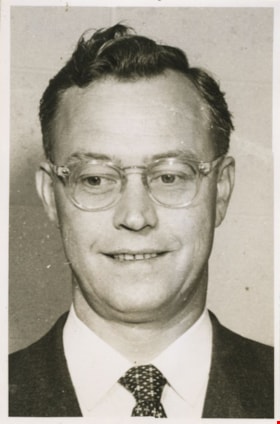
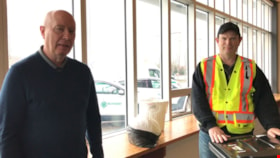
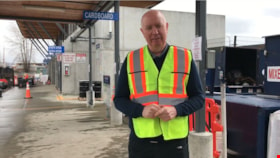
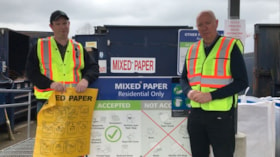
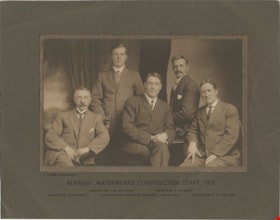
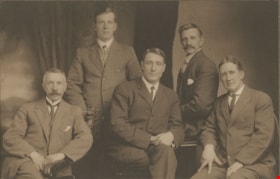
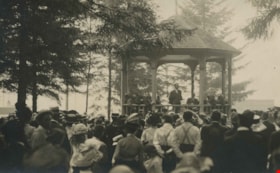

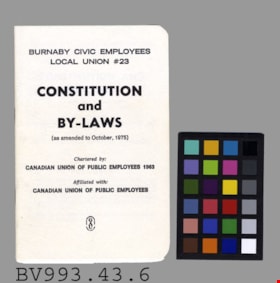
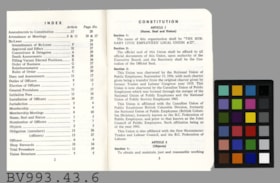
![CUPE rally at Simon Fraser University, [2003] thumbnail](/media/hpo/_Data/_Archives_Images/_Unrestricted/535/535-2295-1.jpg?width=280)
![CUPE support workers strike, [2000] thumbnail](/media/hpo/_Data/_Archives_Images/_Unrestricted/535/535-3073.jpg?width=280)
![Don Jantzen, [198-]. Item no. 549-040. thumbnail](/media/hpo/_Data/_Archives_Images/_Unrestricted/540/549-040.jpg?width=280)

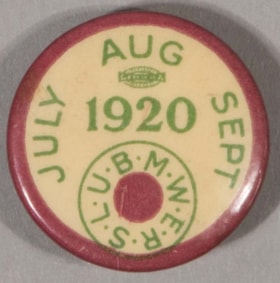
![Lockout at Forest Lawn Memorial Park, [2005] thumbnail](/media/hpo/_Data/_Archives_Images/_Unrestricted/535/535-1956-2.jpg?width=280)
